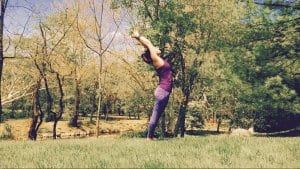Written by: Andy Vantrease
Impermanence. A word that makes many of us uneasy, yet one that best describes the natural world we live in. Seeds sprout, flowers bud, bloom and wither, snow falls and melts, storms surge through leaving rainbows and cloudless skies, riverbeds evaporate and crack under the feet of fawns following their mothers, learning how to survive before they’re nudged out on their own.
As children, we learn about life and death through science and nature, and yet, as we age, we stray from our connection with the earth and the environment that exists around us. We wake up, check our phones for pictures of people we may or may not know, dress for work and spend countless days under florescent lights, shoulders hunched over desks and computers, wondering if this is really all we’re living for. We are taught that this is “normal.” This is “growing up.”
In order to appreciate the miracles of life, we must reconnect with the outside world, for there’s much to learn from nature’s sounds, smells, and sights. A wild flower growing through the tiny crack in a brick building, when blooming appeared impossible. A downed tree in the forest with its roots up in the air because its limbs became unbalanced. Bees working day in and day out to pollinate and preserve the forest.
There are lessons and metaphors all around us, if only we open to them. Just like the cycle of the moon or the change of the seasons, every aspect of our being is constantly in flux: our identities, our bodies, our relationships. You aren’t the person you were yesterday, just as tomorrow you’ll be different than you are at this moment.
In studying yoga, one learns to reconnect with the basics and embrace change. It all starts with the breath. The rise and fall of the lungs, the beat of the heart, the sensations that let us know we’re still here. Yoga teaches us to trust the transient nature of the world. Each day, stepping onto the mat, we feel, move, breathe, and think differently than perhaps we did the day before, but we’re still here, trusting the journey and learning that the journey is in fact the only true destination. In yoga, practice doesn’t make perfect. In yoga, practice makes impermanence a little less scary. Practice pushes growth, in whatever way you choose to notice and define it.
Today, take a walk in the woods, without your phone, without looking for that next photo for Instagram, without rushing. Watch the movement of the creek, the fish, the insects. Reconnect with the environment that allows you to keep breathing, day after day. Tap into the inner child who was once fascinated with the miracles of the world, and harness that fascination during your yoga practice. Recreate your perception of growth, of gratitude and of appreciation.
